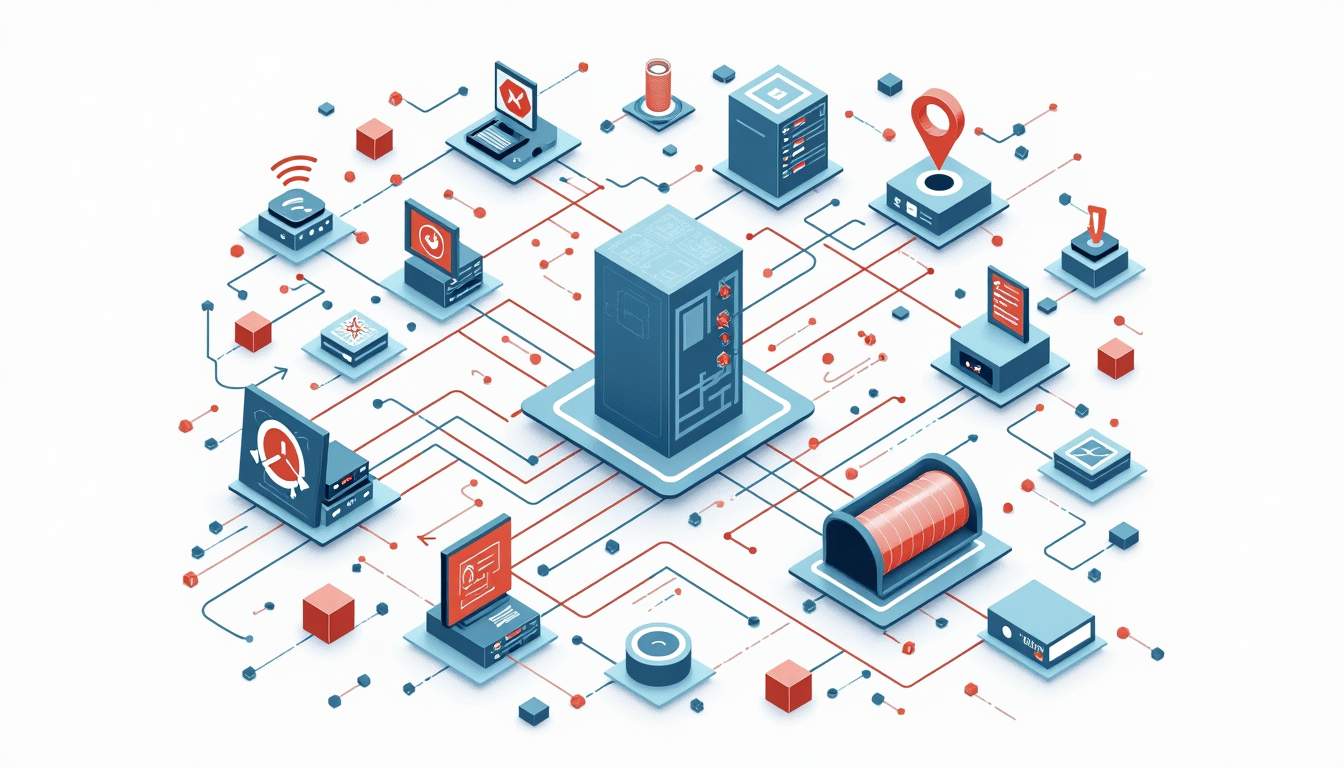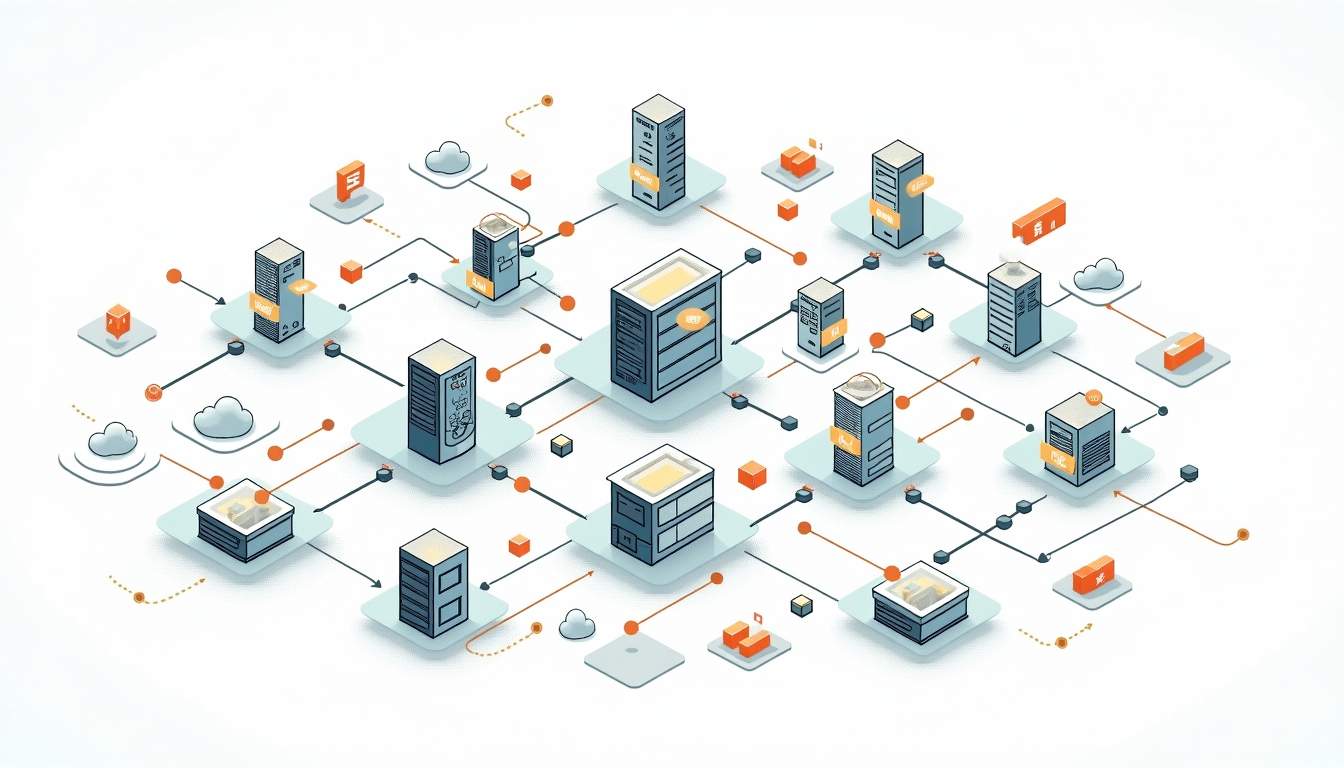Choosing the right software architecture is one of the most important decisions for any development team. The pattern you select affects scalability, maintainability, performance, and how quickly you can release new features. In this article, we will explore the top 6 architecture patterns in software engineering, looking at how they work, when to use them, their advantages and challenges, and real-world examples of companies applying them successfully.
Along the way, we will also show how modern teams use AI-driven product engineering sprints to plan and validate these architectures faster, ensuring design decisions are grounded in real-world constraints while accelerating product-market fit.
The Top 6 Architecture Patterns in Software Engineering are:
- Microservices
- Event-Driven Architecture (EDA)
- Layered (N-Tier)
- Serverless
- CQRS (Command Query Responsibility Segregation)
- Hexagonal (Ports and Adapters)
1. Microservices Architecture: Breaking Down Complexity
Microservices split an application into independent services, each handling a specific business function. Teams can develop, deploy, and scale these services independently, which speeds up iteration cycles.
When to Use: Microservices work best for large, complex applications with frequent updates or distributed teams.
Advantages:
- Independent scaling of components
- Faster deployment and iterative development
- Fault isolation, so one service failure does not affect the entire system
- Flexibility in technology choices
Challenges:
- Service orchestration and monitoring can be complex
- Data consistency across services must be carefully managed
- Security management is more involved
Real-World Example:
Alibaba transitioned from a monolithic platform to microservices for inventory, payments, and search, improving deployment frequency by 70% during peak events like Singles' Day. Teams using AI-driven product engineering sprints can model these services early, simulate traffic scenarios, and identify scaling bottlenecks before coding begins.
Read more on: How to Design Scalable MVP Architecture
2. Event-Driven Architecture (EDA): Reacting in Real Time
EDA organizes systems around events, which trigger reactions in other components. Decoupling makes systems highly responsive and scalable.
When to Use: IoT, financial systems, or any real-time, high-volume application.
Advantages:
- Immediate responsiveness to events
- Loose coupling makes systems easier to evolve
- Improved fault tolerance, since a single component failure rarely affects the entire system
Challenges:
- Debugging and tracing events can be difficult
- Maintaining consistency across components requires careful design
Real-World Example:
AWS IoT processes sensor data in real time for smart cities. Using AI-driven simulations, teams can run engineering sprints that validate event flows and alert systems under high loads before deployment.
3. Layered (N-Tier) Architecture: Stable and Predictable
Layered architecture divides an app into presentation, business logic, and data layers. It is reliable and maintainable but can be less flexible for rapid iteration.
When to Use: Enterprise applications that prioritize stability, maintainability, and clear separation of concerns.
Advantages:
- Clear separation of concerns
- Easier testing and maintenance
Challenges:
- Less flexible for rapid changes
- Performance can be affected by the multiple layers
- Risk of over-engineering in smaller applications
Real-World Example:
Zalando leverages layered architecture for its e-commerce platform. By integrating AI-driven planning sprints, teams could anticipate bottlenecks in different layers and optimize workflows before committing to code.

4. Serverless Architecture: Letting the Cloud Handle Scaling
Serverless computing allows developers to focus on code, while the cloud provider automatically handles infrastructure and scaling. Functions execute on demand.
When to Use: Variable workloads, lightweight APIs, and event-driven processes.
Advantages:
- Reduced operational overhead
- Automatic scaling to handle load spikes
- Cost-effective pay-for-use model
Challenges:
- Cold-start latency may affect response times
- Risk of vendor lock-in
- Reduced control over runtime environment
Real-World Example:
Netflix uses serverless patterns to handle spiky workloads efficiently. In AI-driven product engineering sprints, serverless components can be simulated under different usage patterns to ensure performance and cost predictability before production.
5. CQRS: Optimizing Reads and Writes
CQRS separates read and write operations, allowing each to be optimized individually.
When to Use: Complex systems where read and write operations have different performance requirements or where auditing and historical tracking is critical.
Advantages:
- Optimized read and write operations
- Easier scaling of high-demand operations
- Improved auditability and data integrity
Challenges:
- Higher complexity than traditional CRUD systems
- Requires careful management of eventual consistency
Real-World Example:
AxonIQ uses CQRS in enterprise applications, scaling read and write operations independently. AI-driven engineering sprints help teams model command and query paths early, identify potential consistency issues, and optimize workflows.
6. Hexagonal Architecture: Isolating the Core
Hexagonal architecture, also called Ports and Adapters, isolates core business logic from external systems such as databases, APIs, and UI layers. Interfaces handle communication, while adapters connect to external services.
When to Use: Applications requiring high maintainability, testability, and adaptability for future changes.
Advantages:
- Clear separation of concerns
- Easier testing and component replacement
- Flexible integration
Challenges:
- Complexity in setup
- May be overkill for smaller applications
Real-World Example:
The Guardian adopted hexagonal architecture for their content management system. Teams used AI-driven product engineering sprints to simulate adapter interactions and test integrations with external services before implementation.

Comparing Architecture Patterns in Software Engineering
Real-World Examples
- Alibaba (Microservices): 70% faster deployment with independent services
- AWS IoT (EDA): Real-time processing for smart city and industrial data
- Zalando (Layered): Stable enterprise e-commerce platform
- Netflix (Serverless): Scales spiky workloads without managing servers
- AxonIQ (CQRS): Separate read/write paths for scalable enterprise apps
- The Guardian (Hexagonal): Decoupled content management system for easier integration and testing
AI-driven product engineering sprints are now a key part of applying these patterns in practice. They allow teams to model, simulate, and validate architecture decisions early, reducing risk and accelerating development cycles.
Conclusion
Modern software architecture is not one-size-fits-all. Microservices provide agility, EDA ensures responsiveness, layered systems give stability, serverless reduces operational burden, CQRS optimizes complex data operations, and hexagonal architecture enhances maintainability.
By integrating AI-driven product engineering sprints, teams can quickly test architecture decisions, anticipate challenges, and align technical design with business goals, making implementation faster, more reliable, and more effective.
FAQ
Q: Which architecture is best for startups?
Serverless and microservices offer agility, scalability, and cost efficiency.
Q: Can patterns be combined?
Yes. Many modern applications mix microservices, EDA, CQRS, or hexagonal designs to meet complex requirements.
Q: How do AI-driven product engineering sprints fit in?
They help teams simulate and validate architecture decisions early, optimizing scaling, workflows, and integrations before coding.
Q: Is EDA only for IoT systems?
No. Any system requiring real-time responsiveness or high-volume event handling benefits from EDA.






